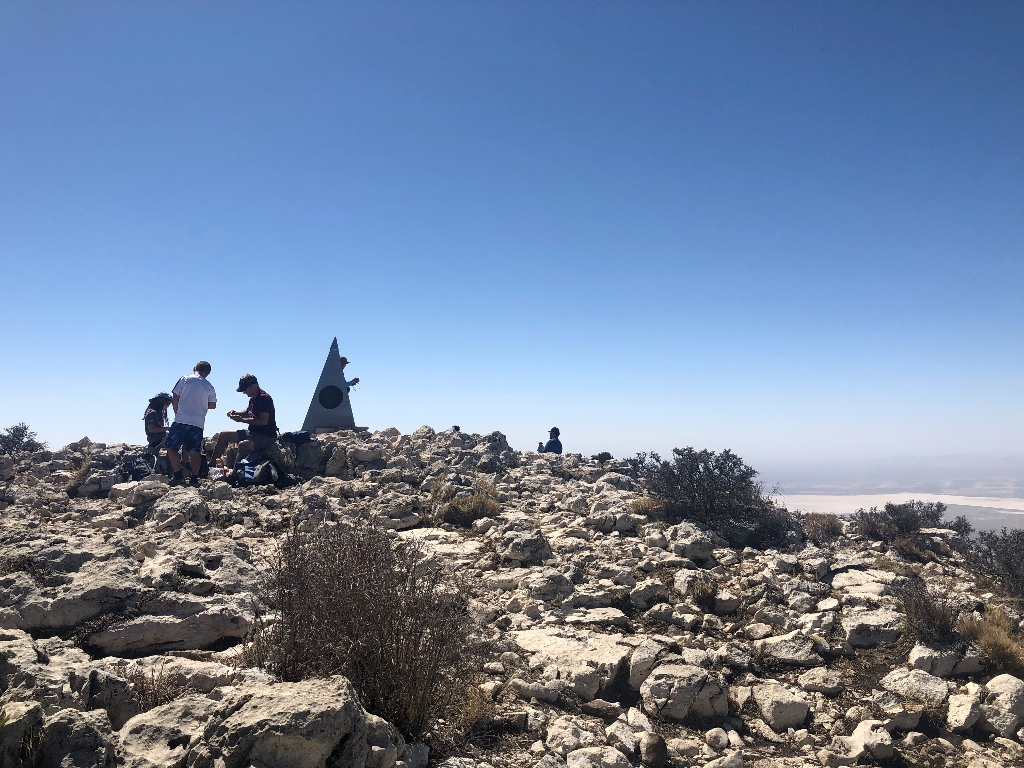
Guadalupe Peak is the highest natural point in Texas, with an elevation of 8,751 feet above sea level. The peak can be climbed by a maintained strenuous day hike via the Guadalupe Peak Trail with a 3,000 feet elevation gain at any time of the year. This is the most popular day hike in the park and the summit can be crowded on weekends. Weather at the summit is generally ten degrees cooler and winds are ten miles per hour faster than Pine Springs.
A stainless steel pyramid marks the summit. It was erected by American Airlines in 1958 to commemorate the 100th anniversary of the Butterfield Overland Mail, a transcontinental stagecoach route that passed south of the mountain.
While Guadalupe Peak offers exhilarating physical challenges and stunning vistas to those that hike it, its desert mountain environment is fragile: rocks, plants, and wildlife are vulnerable to damage wrought by the presence and action of humans. And in their own way, the spirited humans who climb Guadalupe Peak are also fragile: they’re vulnerable to accidents and exhaustion, to high winds, rain and snow, and to the results of their own choices and preparation as well as those of the visitors before them. Because Guadalupe Peak has been a destination of
enormous popularity but is also a site of grandeur and vulnerability – human and non-human – it offers an unusually important opportunity to demonstrate the careful balance within the twofold mission of the national park system.
Is there something we missed for this itinerary?
Itineraries across USA


















































